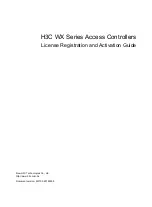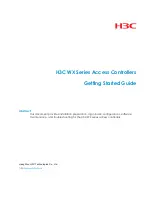
2. OPERATION PRINCIPLES
GEK-106305A
DTR Digital Tap Changer Controller
7
2. OPERATION PRINCIPLES
2.1 CONTROL FUNCTIONS
The transformer tap changer controller controls manually or automatically the OLTC (transformer on load tap
changer), originating tap-up and tap-down commands, in order to keep the power supply voltage practically constant,
independently from the load.
2.1.1 REGULATION ALGORITHMS
In order to achieve this voltage regulation, the DTR uses two algorithms:
1. Comparing the measured voltage with the voltage setpoint.
2. Compensating the voltage dropouts generated by the load current by means of the calculation of the apparent
current. This calculation consists of subtracting from the measured voltage, a voltage proportional to the load
current, before the measured voltage is compared with the voltage setpoint.
The main characteristics of both algorithms are:
•
The variation of the measured voltage in relation to the voltage setpoint is provided with an Insensibility Degree
(ID). This ID is defined as the maximum admissible variation of the voltage before the DTR originates a
command to change the tap in the OLTC. This operation avoids the excessive wear of the OLTC contacts, with a
practically constant voltage at the same time.
•
If the difference between the measured voltage and the setpoint is greater than the Insensitivity Degree will be
corrected with a certain delay
Operating Time
(OT), so that:
•
If the difference lasts only for a short time (less than the Operation Time), the DTR system will not order
a tap change.
•
The voltage deviations will be regulated proportionally to the difference between the real value and the
setpoint value. The greater the deviation is, the sooner the DTR will operate.
The way of operation of both algorithms is the following:
1.
If
|DV| > ID
Absolute value of the difference between the setpoint and the real voltage is greater than Insensitivity Degree
Then
An operation on the OLTC must be performed.
Otherwise
No operation will be produced on the OLTC
2.
If
DV: Deviation between the real voltage and the setpoint is lower than zero
Then
There will be a tap-down operation
Otherwise
There will be a tap-up operation
Summary of Contents for DTR GEK-106305A
Page 5: ...TABLE OF CONTENTS 4 DTR Digital Tap Changer Controller GE 106305A ...
Page 49: ...4 PROGRAMMING THE UNIT 48 DTR Digital Tap Changer Controller GE 106305A ...
Page 55: ...5 TECHNICAL CHARACTERISTICS 54 DTR Digital Tap Changer Controller GE 106305A ...
Page 71: ...8 INSTALLATION AND MAINTENANCE 70 DTR Digital Tap Changer Controller GE 106305A ...
Page 83: ...9 KEYPAD AND DISPLAY 82 DTR Digital Tap Changer Controller GE 106305A ...
Page 87: ...FIGURES 86 DTR Digital Tap Changer Controller GE 106305A FIGURE 3 PANEL MOUNTING DIAGRAM ...
Page 88: ...FIGURES GEK 106305A DTR Digital Tap Changer Controller 87 FIGURE 4 RS 232 CONNECTION ...
Page 89: ...FIGURES 88 DTR Digital Tap Changer Controller GE 106305A FIGURE 5 DIMENSIONS DIAGRAM ...
Page 90: ...FIGURES GEK 106305A DTR Digital Tap Changer Controller 89 FIGURE 6 FRONT VIEW ...
Page 91: ...FIGURES 90 DTR Digital Tap Changer Controller GE 106305A FIGURE 8 GENERIC REAR VIEW ...









































